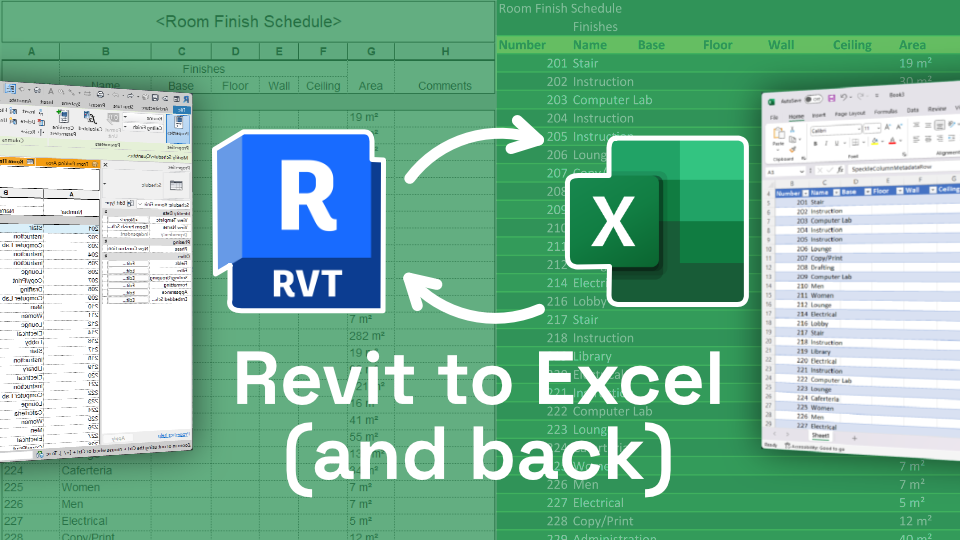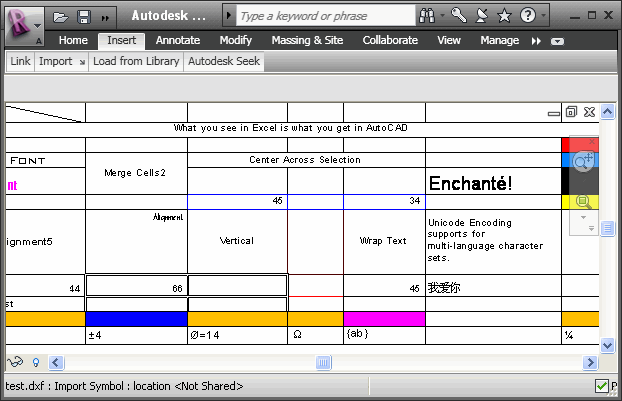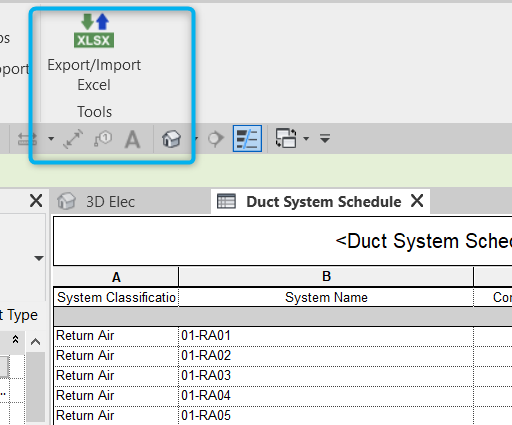Enhance Your Operations with Revit Add Ins and Plugins
Wiki Article
Excel Empowerment: Supercharge Your Revit Projects With Seamless Information Import
Are you wanting to supercharge your Revit jobs? With seamless data import, Excel empowerment can be the trick to unlocking your project's full potential. Think of enhancing the import process and maximizing performance through smooth information assimilation. In this post, we will certainly share tips and tricks for making use of Excel in your Revit jobs. Discover exactly how utilizing the Excel-Revit connection can lead to success in your projects. Obtain ready to take your Revit tasks to the following degree with Excel empowerment.The Power of Master Revit Projects
You can supercharge your Revit projects by using the power of Excel for seamless information import. Excel is a flexible tool that can substantially boost your operations and performance in Revit (import excel into revit). With Excel, you can conveniently import and handle huge amounts of data, saving you effort and timeAmong the crucial benefits of using Master Revit is its capacity to deal with complex estimations and solutions. You can utilize Excel to do estimations on your data, such as producing quantities, calculating costs, or assessing performance. This can be especially beneficial when collaborating with huge projects that require considerable calculations.

Additionally, Excel provides a easy to use and familiar interface for dealing with data. You can arrange and adjust your data in a spread sheet format, making it very easy to check out and edit. This can be specifically handy when teaming up with others or when you need to make fast modifications to your project information.
In addition, Excel enables you to conveniently import and export data in between Revit and various other software applications. You can import information from outside resources into Revit, such as product requirements or devices routines, and export information from Revit to Excel for additional analysis or coverage.
Streamlining Data Import With Master Revit
Simplifying information import in Revit becomes less complicated when using Excel as a device. With Excel, you have the power to perfectly import and handle huge amounts of information in your Revit jobs. By making use of the acquainted interface and performance of Excel, you can save time and boost effectiveness in your operations.Among the crucial advantages of making use of Excel for data import in Revit is the capability to quickly arrange and control data prior to importing it into your task. With Excel's effective features, such as arranging, filtering system, and solutions, you can rapidly tidy up and style your data to meet the requirements of your Revit task.
Moreover, Excel enables you to import information from numerous sources, such as databases, spread sheets, or perhaps online applications. This versatility provides you the freedom to collect information from different systems and settle it into one main place for easy access and monitoring.
Additionally, Excel supplies the choice to produce custom design templates for information import in Revit. By developing layouts customized to your job's specific demands, you can make sure uniformity and precision in your information import procedure.
Total, using Excel as a tool for information import in Revit improves the process and boosts your efficiency. So why not make the most of this powerful device and supercharge your Revit projects with smooth data import using Excel?
Making Best Use Of Efficiency With Seamless Data Combination
Take full advantage of efficiency by effortlessly incorporating and managing information in your operations. Gone are the days of by hand inputting information into your system, squandering valuable time and resources. With seamless information integration, you can simplify your processes and supercharge your efficiency.
When you have a smooth combination Related Site system in area,Handling data becomes a wind. You can quickly organize and classify your data, making it much easier to retrieve and evaluate. Say farewell to the days of undergoing countless spreadsheets for that a person item of information you require.

Excel Advice for Revit Projects
Additionally, you can use Excel to produce custom-made design templates for data import and export. This means, you can make certain consistency and accuracy when transferring information between Revit and Excel. On the whole, mastering these Excel tricks and pointers will greatly improve your capability to take care of and manipulate data in your Revit projects.Using the Excel-Revit Link for Success
To make the most of your Excel-Revit connection, make the most of the capacity to easily move and integrate task details. By harnessing this powerful connection, you can supercharge your Revit tasks and improve your operations. With just a few easy actions, you can import information from Excel directly into Revit, saving you time and ensuring accuracy.One of the essential benefits of the Excel-Revit link is the capacity to move data perfectly. Whether you are importing routines, space information, or even geometry info, Excel supplies an easy to use interface that enables you to organize and control your data before importing it into Revit. This indicates you can quickly update and change your task information in Excel, and with a couple of clicks, move those adjustments directly into your Revit design.
In addition to transferring information, the Excel-Revit connection likewise permits synchronization. This indicates that any kind of adjustments made in Excel can be immediately upgraded in Revit, making sure that your job information is constantly up to day. This synchronization attribute is specifically beneficial when managing large and intricate projects, as it eliminates the requirement for manual information entry and minimizes the threat of mistakes.
Conclusion
So there you have it - the power you can check here of Excel in Revit tasks can not be undervalued. By simplifying data import and making best use of effectiveness with seamless data integration, you can supercharge your jobs and achieve success. With the Excel-Revit connection, you have the devices to take this post your tasks to the next level and accomplish phenomenal outcomes. So do not wait any longer, start using the power of Master your Revit tasks today and unlock a world of possibilities.You can supercharge your Revit jobs by using the power of Excel for smooth information import. With Excel, you have the power to effortlessly import and handle big quantities of information in your Revit projects (revit add ins). Generally, grasping these Excel suggestions and tricks will substantially improve your capability to handle and control information in your Revit projects
Whether you are importing timetables, space information, or also geometry information, Excel supplies an easy to use interface that enables you to organize and control your information prior to importing it into Revit. By enhancing information import and making best use of performance with smooth data combination, you can supercharge your projects and achieve success.
Report this wiki page